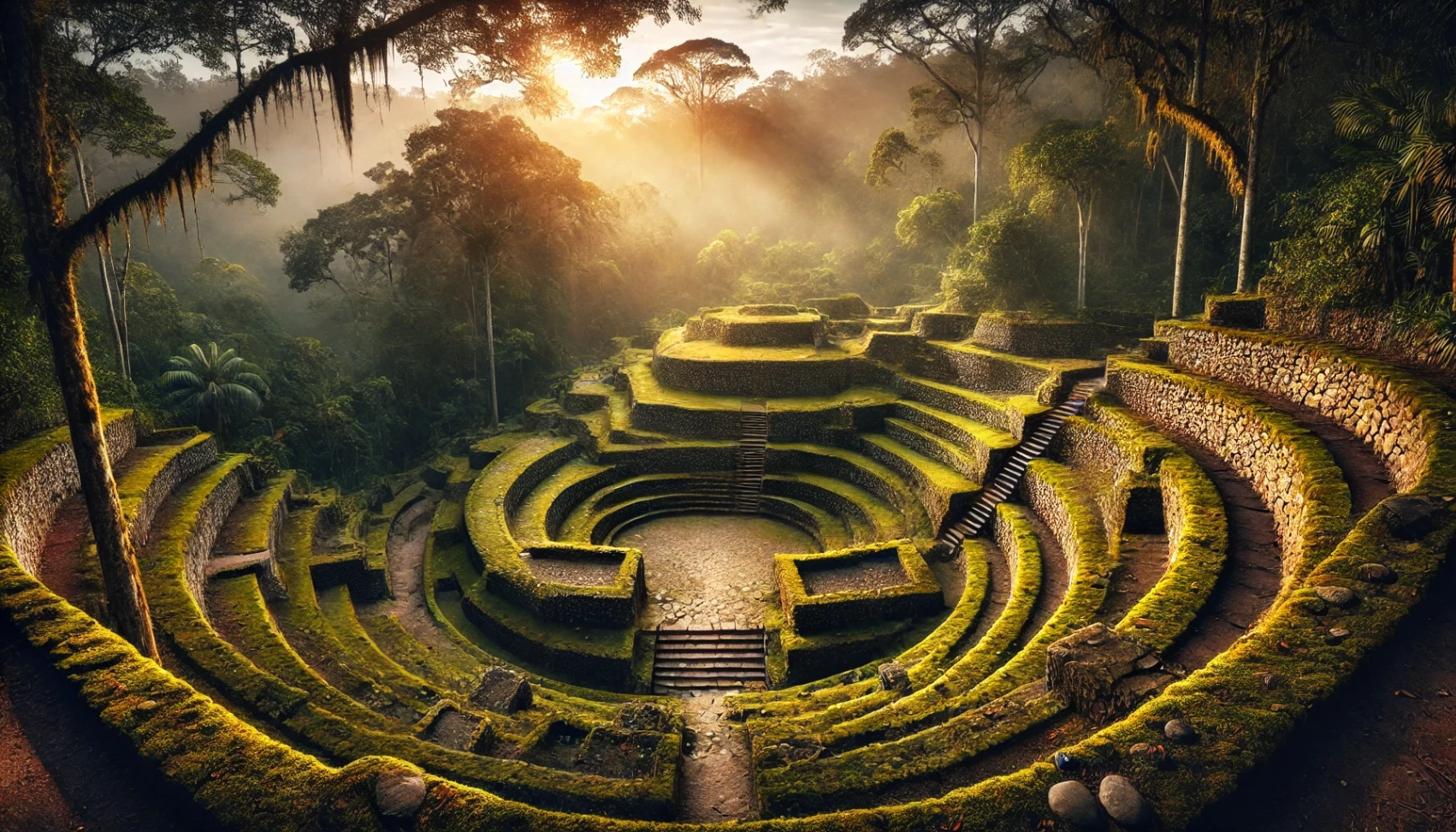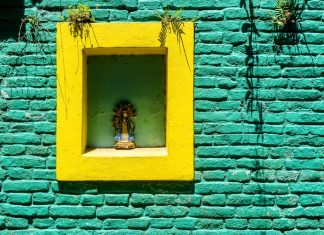South America is home to some of the most breathtaking ancient wonders, offering a glimpse into civilizations that shaped history.
This article highlights iconic sites like Machu Picchu, the Nazca Lines, Easter Island’s Moai statues, and lesser-known gems such as Chan Chan and Tiwanaku.
You’ll also discover cultural insights, travel tips, and sustainable ways to explore these remarkable destinations.
Machu Picchu, Peru
Machu Picchu, built in the 15th century, was a key Incan citadel showcasing the empire’s engineering and cultural prowess.
Iconic structures like the Sun Temple and Intihuatana stone reflect advanced astronomical and architectural techniques.
Travelers can reach Machu Picchu via scenic train rides, the challenging Inca Trail, or guided tours that provide historical context.
Best Times to Visit
Choosing the right time to visit ensures comfortable weather and a more enjoyable experience without overwhelming crowds.
- April to May: Moderate weather, fewer tourists, and lush greenery after the rainy season.
- September to October: Pleasant temperatures and lower tourist numbers than peak months.
- Avoid June to August: High season with large crowds and increased prices despite good weather.
- Early Mornings or Late Afternoons: Ideal for avoiding midday crowds and capturing stunning photographs.
Tips for Acclimating to High Altitude
While exploring sites like Machu Picchu, preparing for high-altitude conditions ensures a safer
and a more comfortable experience.
- Take it slow: Before ascending, spend a day at a lower altitude to allow your body time to adjust.
- Stay hydrated: Drink plenty of water to combat dehydration caused by higher elevations.
- Avoid heavy meals and alcohol: These can worsen symptoms of altitude sickness.
- Consider altitude medication: Consult a doctor about medications like acetazolamide to prevent or reduce symptoms.
- Chew coca leaves or drink coca tea: A traditional remedy used locally to ease altitude effects.

Nazca Lines, Peru
The Nazca Lines, created over 2,000 years ago, are thought to be astronomical markers, ceremonial paths, or offerings.
Prominent geoglyphs include the detailed Hummingbird and the Spider, symbolizing fertility.
Their scale and precision captivate researchers and visitors alike.
Viewing Options
Different vantage points offer unique perspectives to appreciate these ancient geoglyphs' scale and detail fully.
- Scenic Flights: Small planes provide an aerial view of the entire collection, offering the best perspective of their scale.
- Observation Towers: Accessible and affordable, these towers allow closer views of a few key geoglyphs.
- Hilltop Views: Some surrounding hills offer natural viewpoints, combining hiking with a chance to see the lines.
- Virtual Tours: For those unable to visit, online resources and virtual experiences showcase high-resolution lines.
Preservation Challenges and Ongoing Research
Protecting the Nazca Lines is vital to preserve their cultural and historical significance for future generations.
- Natural Erosion: Wind and rain gradually wear away the lines, posing long-term risks.
- Human Activity: Urban expansion, agriculture, and unauthorized access have caused damage to some areas.
- Tourism Impact: Increased foot and vehicle traffic can disturb the fragile desert surface.
- Ongoing Research: Scientists use drone technology and 3D mapping to uncover new geoglyphs and study their origins.
- Cultural Preservation: Collaboration with local communities aims to balance preservation and tourism.
Moai Statues, Easter Island (Chile)
The Rapa Nui civilization on Easter Island, active from 1200 to 1500 AD, created Moai statues to honor ancestors.
Some over 30-foot tall statues face inland to watch over villages and symbolize spiritual connections.
Carved from volcanic tuff at Rano Raraku, many unfinished Moai reveal the labor-intensive techniques.
How to Explore Easter Island Responsibly
Visiting Easter Island responsibly helps preserve its cultural heritage and fragile environment.
- Stick to Designated Paths: Avoid stepping on or near the Moai and other protected areas.
- Respect Local Customs: Follow guidelines set by the Rapa Nui community to honor their traditions.
- Use Licensed Guides: Choose local guides who provide cultural insights while supporting the community.
- Limit Plastic Waste: Bring reusable bottles and bags to reduce environmental impact.
- Support Local Businesses: Opt for locally owned accommodations, shops, and restaurants.
UNESCO World Heritage Site Status and Preservation Efforts
Easter Island’s UNESCO designation highlights its global significance and the need for ongoing conservation.
- UNESCO Recognition: Listed as a World Heritage Site in 1995 for its unique cultural and archaeological value.
- Rapa Nui National Park: Protects the island's natural and cultural assets, including the Moai statues.
- Cultural Preservation: Efforts focus on safeguarding Rapa Nui traditions alongside archaeological sites.
- Tourism Management: Strict visitor guidelines and limits on access help reduce environmental damage.
- Research Programs: Ongoing studies monitor erosion, weathering, and methods to stabilize the Moai.

Ciudad Perdida, Colombia
Ciudad Perdida, or the "Lost City," was rediscovered in the 1970s after centuries of being hidden in the Sierra Nevada mountains.
It holds deep cultural significance for the indigenous Tayrona people, serving as a sacred site and a testament to their advanced civilization.
The trek to Ciudad Perdida takes four to six days. It involves challenging terrain and steep ascents, requiring a good fitness and preparation.
Key Features
Ciudad Perdida showcases remarkable elements that reflect its historical and cultural significance.
- Terraced Platforms: Over 170 terraces are carved into the mountainside for housing and ceremonies.
- Stone Stairways: Intricate pathways connecting various levels of the city.
- Central Plaza: A gathering space used for rituals and communal activities.
- Irrigation Systems: Advanced water management techniques for agriculture and daily use.
- Indigenous Presence: Local tribes use the site as a spiritual and cultural hub.
Guidelines for Respecting the Indigenous Communities Nearby
Respect for the local tribes enhances your visit while preserving their culture and traditions.
- Seek Permission: Follow all rules and guidance set by indigenous authorities during your visit.
- Use Authorized Guides: Only travel with guides approved by the local community.
- Avoid Taking Photos Without Consent: Always ask for permission before photographing people or sacred areas.
- Do Not Disturb Sacred Sites: Stay on designated paths and avoid areas marked as restricted.
- Support Local Initiatives: Purchase crafts or services directly from indigenous communities to contribute to their livelihoods.
Tiwanaku, Bolivia
Tiwanaku, a pre-Columbian cultural center in Bolivia, was a significant hub for the Tiwanaku civilization, influencing Andean culture for centuries.
Key structures like the Gateway of the Sun and the Kalasasaya Temple showcase intricate carvings and advanced construction techniques.
The site’s engineering and precise astronomical alignments highlight the civilization’s deep understanding of architecture and the cosmos.
Visitor Tips for Exploring the Site and Nearby Museums
Proper planning enhances your visit to Tiwanaku and its surrounding attractions.
- Arrive Early: Visit in the morning to avoid crowds and enjoy cooler weather.
- Hire a Guide: Local guides provide valuable insights into the history and significance of the site.
- Wear Comfortable Shoes: The terrain includes uneven paths, so sturdy footwear is essential.
- Visit Nearby Museums: Explore the Tiwanaku and Lithic Museum for artifacts and deeper context.
- Bring Sunscreen and Water: The high-altitude location requires protection against the sun and staying hydrated.

Preservation Efforts and Its Status as a UNESCO World Heritage Site
Tiwanaku’s recognition as a UNESCO site underscores its global importance and the need for
ongoing preservation.
- UNESCO Designation: Declared a World Heritage Site in 2000 for its cultural and historical significance.
- Archaeological Research: Continuous studies uncover more about Tiwanaku’s history and civilization.
- Restoration Projects: Efforts focus on stabilizing structures like the Gateway of the Sun.
- Tourism Management: Controlled visitor access helps prevent damage to fragile areas.
- Community Involvement: Collaboration with local authorities ensures preservation aligns with cultural values.
To Sum Up
South America’s ancient wonders offer a unique window into the ingenuity and culture of its early civilizations.
Exploring these sites responsibly ensures their preservation for future generations while deepening your understanding of the continent’s history.
Plan your journey today and experience the timeless beauty of South America’s archaeological treasures.

















